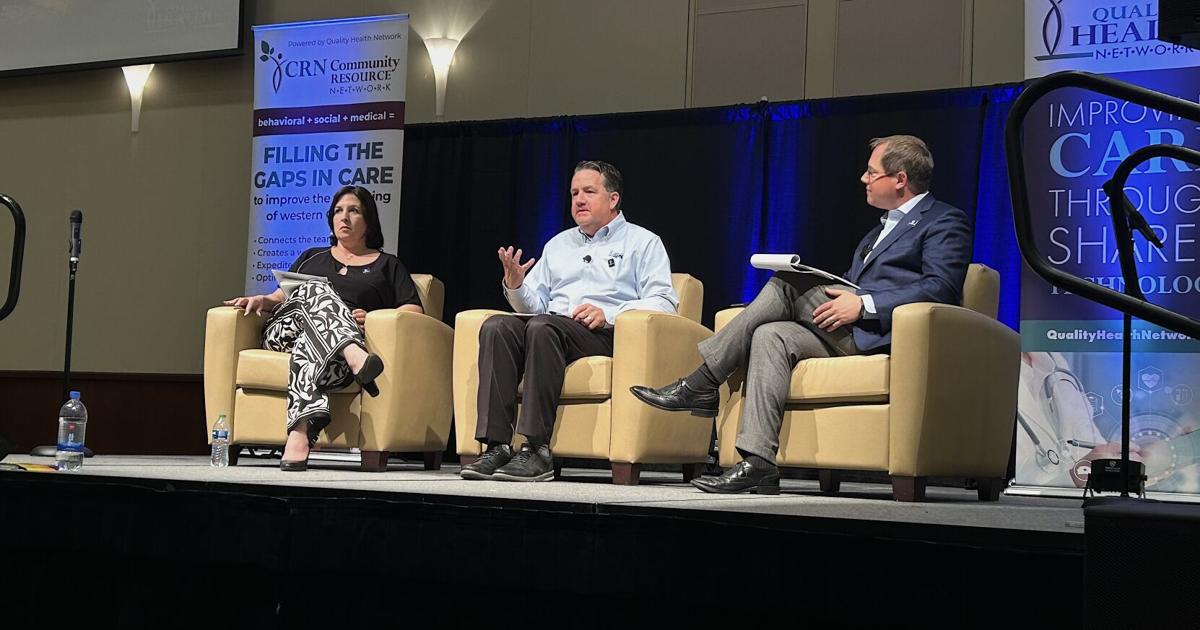Regional health information exchange facilitator Quality Health Network (QHN) held its annual Healthier Together Summit on Thursday, focusing on its 20 years of service to western Colorado and its goals for the next 20 years
Health Information Exchange was created as a secure and efficient platform to share health data and coordinate patient care across different health systems and providers. The HIE was founded through a collaboration between the Regional Hospital of St. Marys, Community Hospital, Health Plans of the Rockies, Hilltop Community Resources, and Mesa County Association of Independent Physician Practices.
We have exchanged more than 173 million messages since 2004 and we are still growing, said Marc Lassaux, Executive Director and CEO of QHN. If you think about it, there is a lot of information that would otherwise not have been available without us all working together to share data for better care.
The summit featured a number of leaders in the medical field who shared their experiences, innovative practices and predictions related to the future of community health and health care. According to Lassaux, this place for different community welfare organizations to share new information and collaborate is essential to ensure they have similar priorities and achieve community goals.
A keynote speaker, Kim Bimestefer, has been the executive director of policy and funding for the Colorado Department of Health for more than five years, and provided the audience with an in-depth look at Colorado’s top health care challenges and some solutions that are already underway or underway. discussion
Bimestefer mainly discussed the rising costs of health care and the importance of addressing the social determinants of health, which are essentially non-medical aspects of life that can affect overall health, such as access to education and geographic location.
He said housing affordability is one of the most relevant social determinants of health, as the price of a starter home in Mesa County doubled between 2015 and 2022 and rental costs increased 58% in recent years, even though median household income has only increased. increased by 38%.
How are you supposed to take care of your health when you don’t have a roof over your head or are worried about just paying the rent? she asked.
Among other solutions and initiatives, Bimestefer discussed a tool recently developed by QHN that allows health workers to prescribe community and government resources to address the social determinants of health, rather than just prescribing pills.
This tool (will give) providers and community workers the ability to prescribe programs, he said. This means that when a pregnant woman needs WIC, (the doctor) prescribes it; when a person is food insecure, prescribe SNAP; when a person is insecure with housing, prescribe a housing voucher. This is a game changer and QHN is responsible.
Lassaux later spoke about the future of QHN alongside Melissa Kotrys, CEO of Contexture, the HIE that serves the rest of Colorado and parts of Arizona. Executives discussed hopes to affiliate the two HIEs, expanding QHN’s 30,000-square-mile coverage of both Colorado’s Front Range and Arizona.
We want to use information and data analytics to make people in our communities healthier, promote wellness, and (it would work well because) we have a lot in common, Kotrys said.
Additional speakers were featured throughout the day, including motivational speaker Craig Zablocki and leaders from various industries who addressed topics such as artificial intelligence in healthcare and health information technology, communicating the social determinants of health and the connection between health care and child care.
Between speakers, attendees were encouraged to learn about more than 25 different community health organizations through a resource fair. While focused on community wellness and outreach, participants varied in specialty, with organizations ranging from the West Mountain Regional Health Alliance to Marillac Health.
According to Lassaux, the resource fair was an opportunity for these healthcare organizations to publicize their services and inform attendees about how they can be used across the state.
We were bringing all these resources under one roof (because) it is important that the people who serve our most vulnerable members of the community know what is available and how to best use these services, Lassaux said.
#years #connection #health #care
Image Source : www.gjsentinel.com
